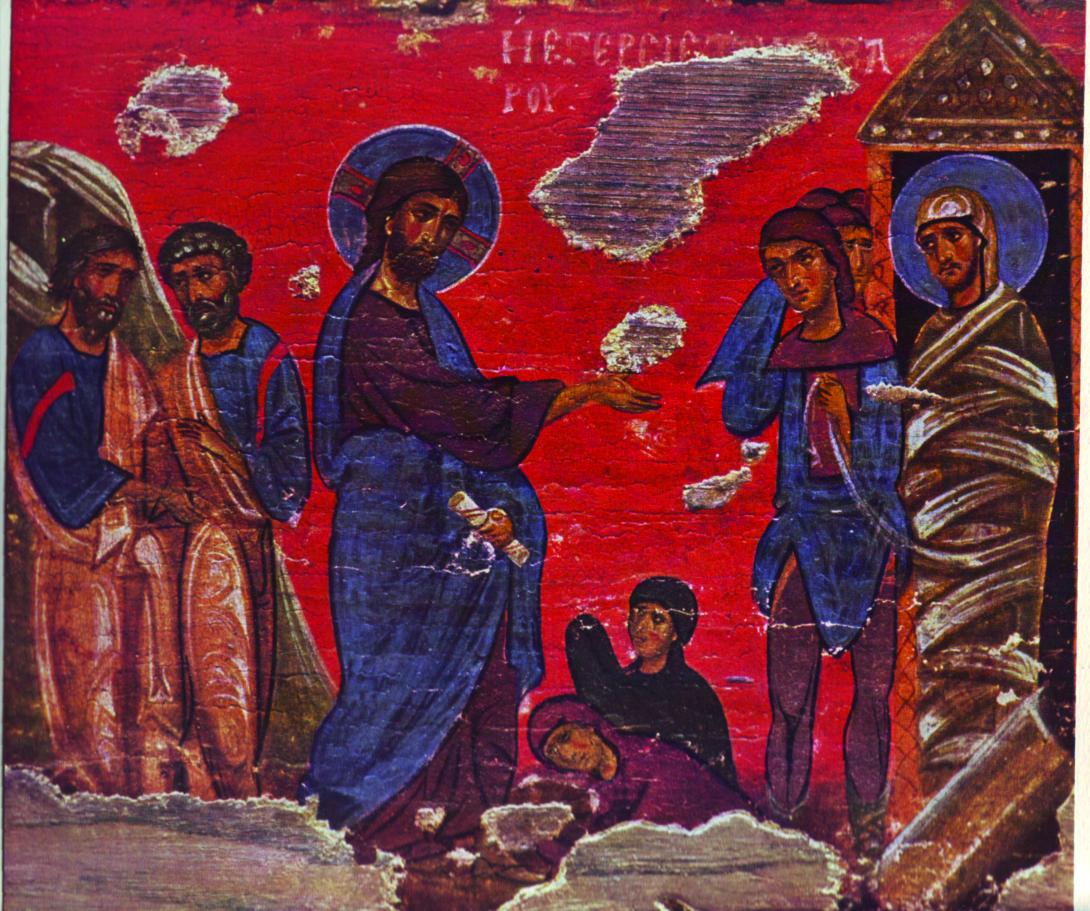
© Photo by wikimedia.org
Why Lazarus?” my mother asked when I told her what my next book would be about. So did many friends, Christians and Catholics, as well as my Jesuit brothers.
“Lazarus? Really?” A look on their faces seemed to say, “I know the story and I like it well enough, but a whole book?”
It’s best to answer that question straightaway. The story of the Raising of Lazarus, traditionally called Jesus’s “greatest miracle” (which is unintentionally risible—as if there were a contest among his miracles), has always exerted a tremendous hold on me. I can’t remember when I first heard the tale of the sisters sending word to Jesus about their dying brother, about Jesus’s seemingly inexplicable delay in coming, about their falling at his feet (either rebuking him or pleading with him), about his prayer at the tomb, and about his restoration to life of the man who is called, mysteriously, “he whom you love.”
As a boy in suburban Philadelphia who went to Mass most Sundays, I surely heard the passage, which comes midway through the Gospel of John, proclaimed from the pulpit. The Raising of Lazarus occupies an exalted place in the church’s calendar of readings: it is heard in churches around the world on the final Sunday of the Lenten season, before Palm Sunday. As far as I can remember, though, hearing it did not make much of an impression on me.
But seeing it did: as an adolescent, I was transfixed by a six-hour miniseries called Jesus of Nazareth, directed by Franco Zeffirelli, which premiered on television in 1977 and was shown every year around Easter for the next decade or so. Sometimes it popped up around Christmas, too. This visual interpretation of the Gospels shaped my understanding of Jesus in a way that nothing else had. I didn’t go to Catholic schools, was a desultory Sunday school student, and took no courses on religion (much less on the Bible) in college. So, for a while Zeffirelli’s story of Jesus was the story of Jesus that lived in my imagination. Long before I studied theology, it was my “Introduction to the New Testament.”
And for me, the scene depicting the Raising of Lazarus was the movie’s undisputed highlight, greater even than the Resurrection in its influence on my sixteen-year-old imagination. Whenever I picture the scene, it is this interpretation that I return to, which was engraved into my memory as a teenager. Sometimes I even hear the music.
But my love for the story, and fascination with it, deepened over time. The themes are almost too rich: the universality of grief, the difficulty of belief, and the power of Jesus in the face of both. In terms of drama, I find it unmatched in the Gospels. In terms of storytelling, I think it is a masterpiece. In terms of faith, I believe it to be essential. I have prayed with it during retreats, have listened to (and preached) countless homilies about it, and have read many books about it ever since I saw Zeffirelli’s film.
Then I went to Bethany, where Lazarus lived, died, and rose again. My first visit was fast, moving, and fascinating, leaving me hungry to know even more.
The place today is called Al Eizariya, and my new book is a meditation on what happened two thousand years ago there. I explore the story of the Raising of Lazarus as recounted in John’s Gospel (the only Gospel in which it appears), and reflect on what it might say to us today—about love, friendship, family, faith, prayer, sadness, frustration, fear, anger, freedom, joy, hope, death, and life.
Overall, I believe that the story of Lazarus can help us to let go of whatever prevents our coming closer to God, to experience fresh ways of living, and, most of all, to experience new life. His story can help us reflect more deeply on the ways that Jesus frees us from all that keeps us bound, from all that keeps us unfree, from all that keeps us from walking into the sunlight. Lazarus’s story helps us understand what it means to hear God say to us, “Come forth!”
This essay is taken from Come Forth: The Promises of Jesus’s Greatest Miracle, by James Martin, SJ (HarperOne, September 2023).











